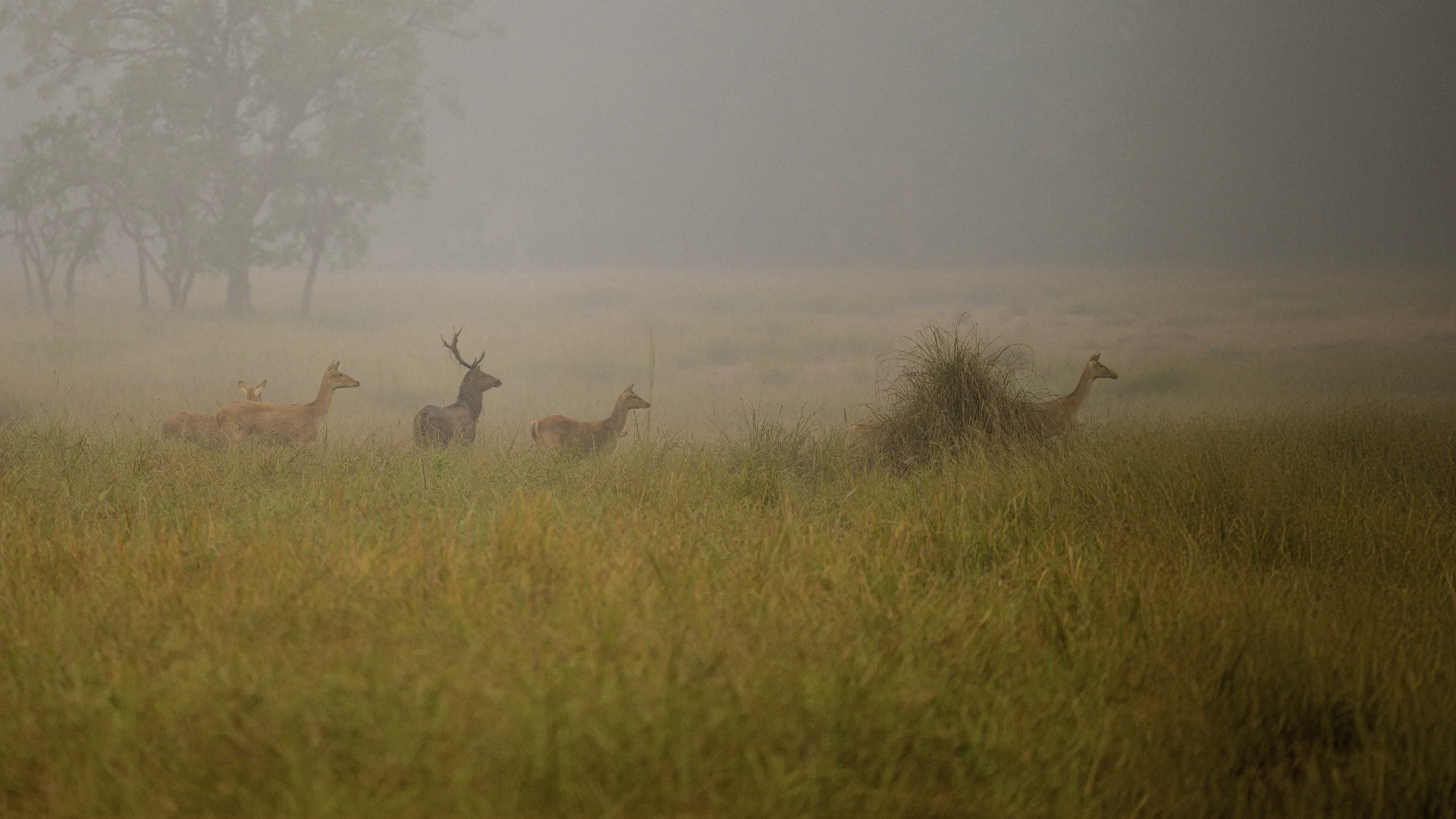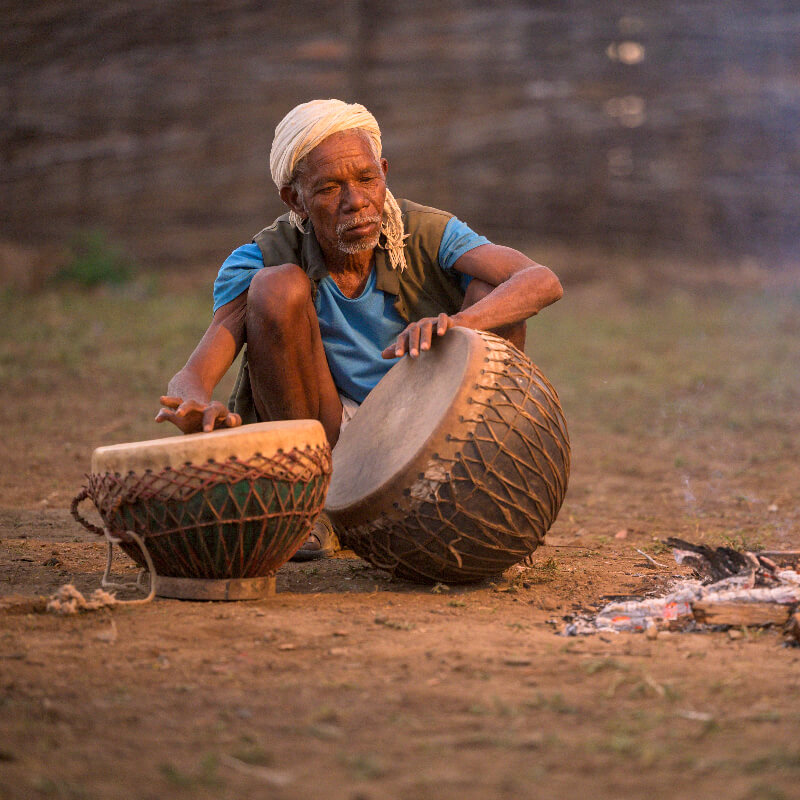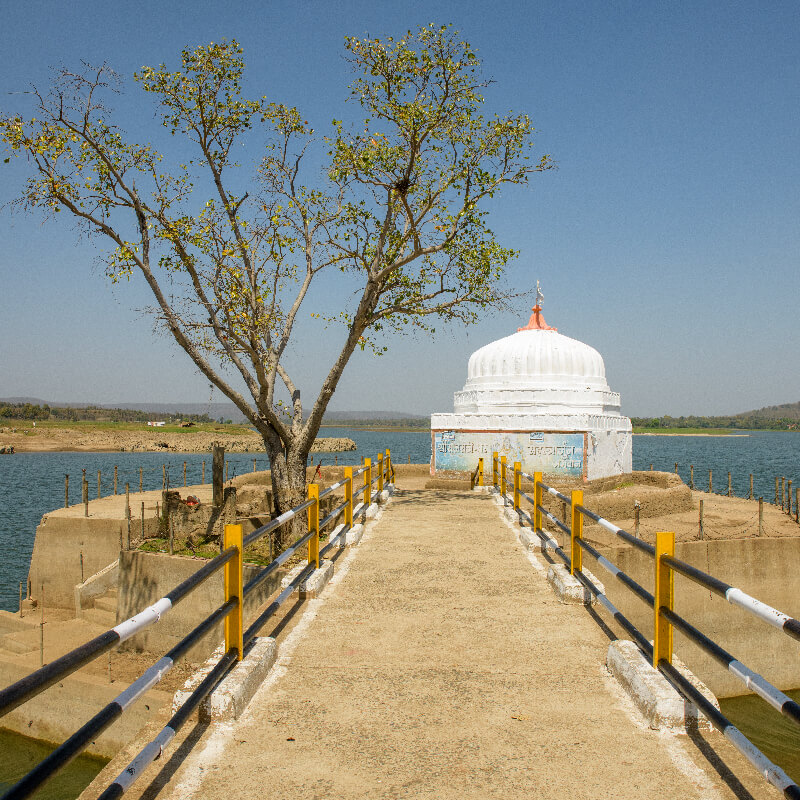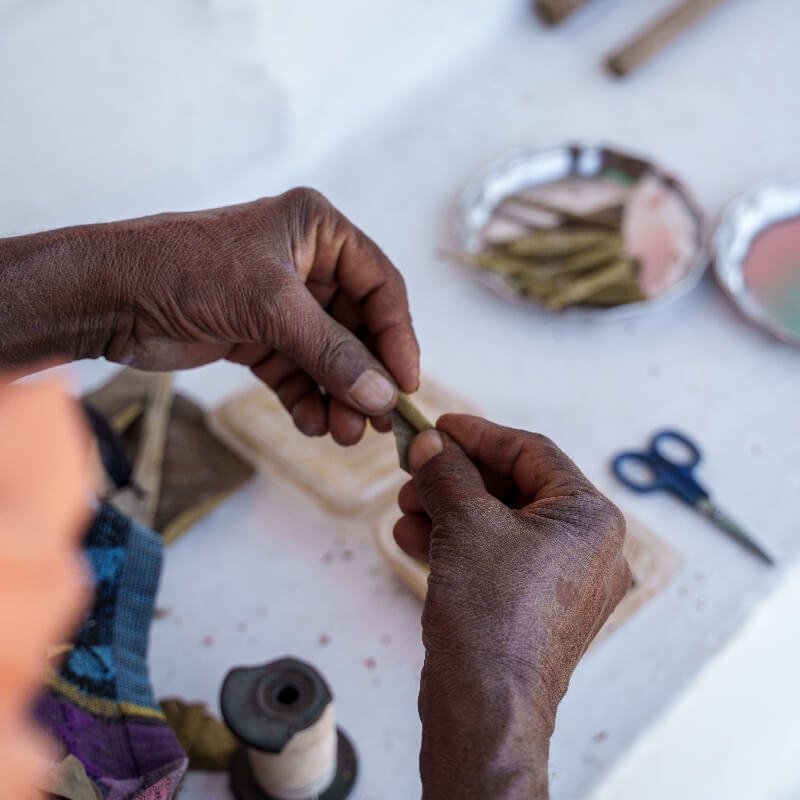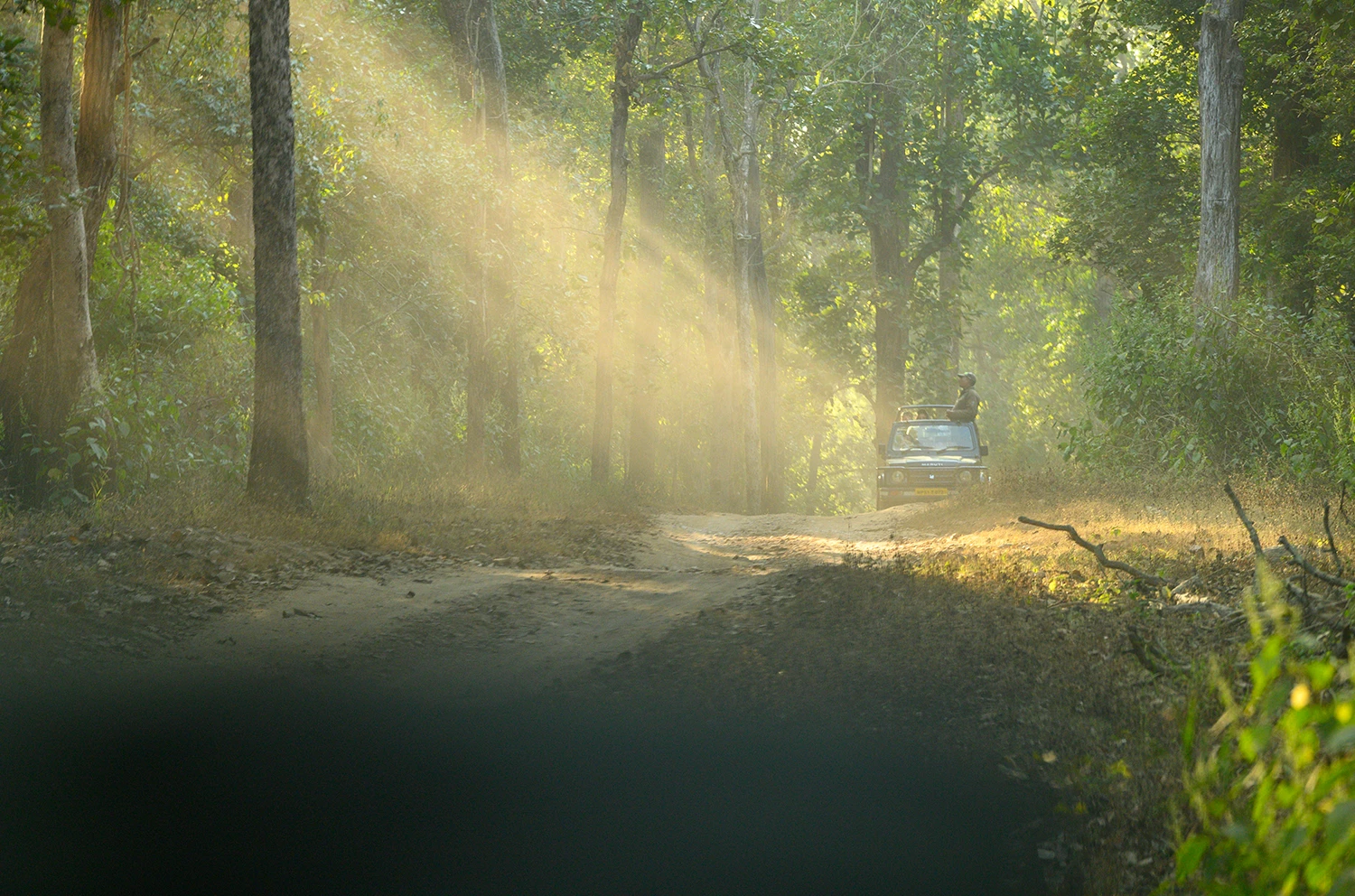
STRAIGHT FROM YOUR
NATURALISTS
Field Notes from Kanha and around
A curated set of field notes and travel guides from the naturalists of Outpost 12, crafted to help you navigate Kanha's seasons, landscapes and journeys with the clarity of an insider.
A Naturalist's Guide from Outpost 12
The soft rustle of sal leaves, the distant alarm call of a chital, and a flicker of gold and black in the undergrowth - these moments define Kanha. It is a dream sighting to see a Tiger walking among the Sal trees with morning light filtering through the jungle or a Tiger walking towards your jeep on a jungle road.
At Outpost 12, our naturalists often say that tiger sightings are as much about timing and patience as they are about luck.
If you're planning your Kanha safari, here's your complete guide to the best time of year to witness the majesty of India's most iconic predator.
February to May - the Peak Sighting Season
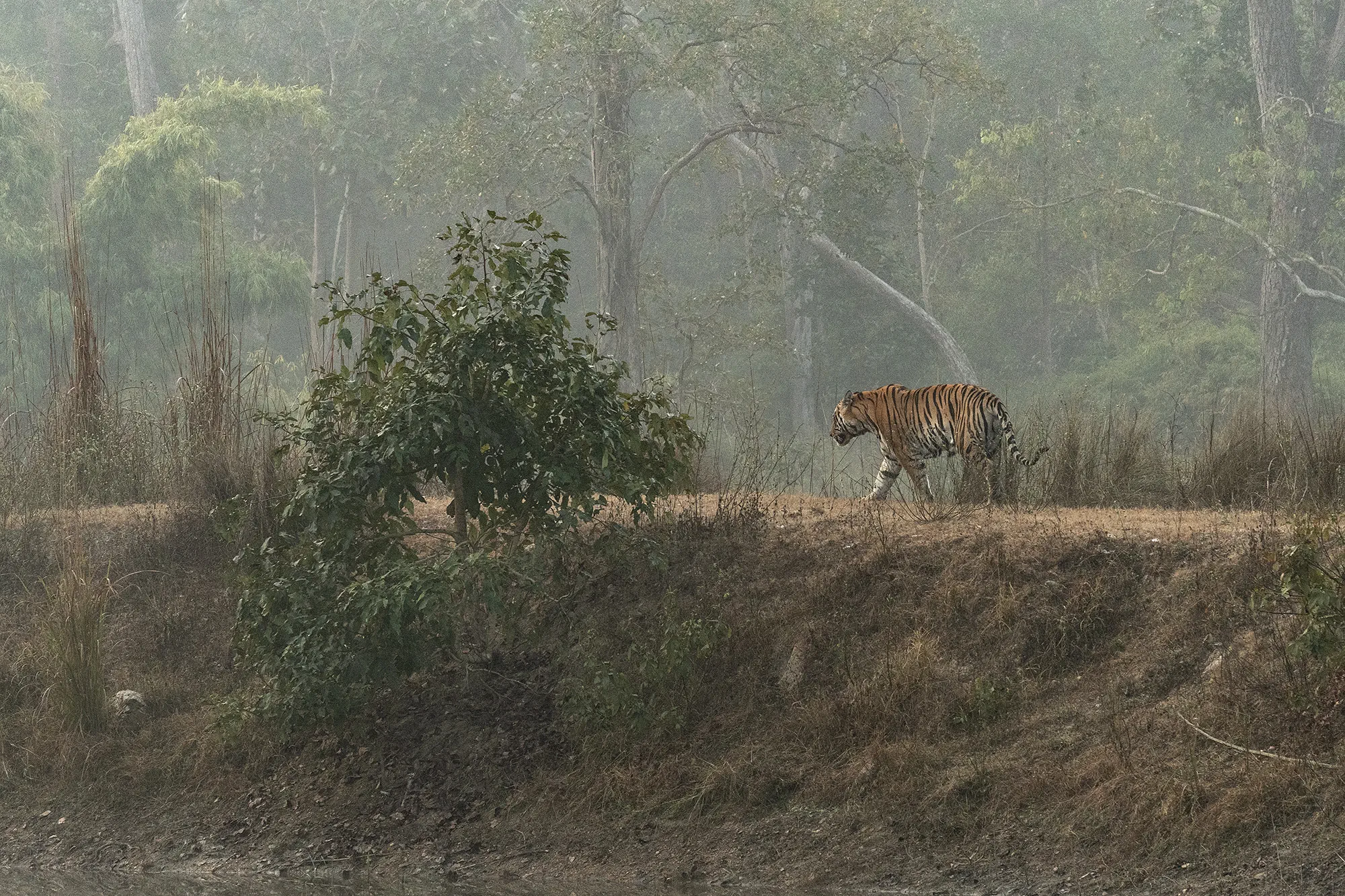
Summer is when Kanha reveals its wild secrets. Months of February and March are when patterns of Tiger movement starts to get more predictable and this sets the tone for the soon approaching peak summer months of April and May.
- Water sources shrink, so tigers often linger around the nullahs, waterholes and the waterbodies of Kanha.
- Visibility improves as the forest thins and the dry season begins.
- Morning safaris (5.30–11.30 AM) - early mornings are good for tracking pugmarks and fresh trails. Later in the morning, one might find Tiger heading towards the water hole.
- Afternoon safaris (3-6 PM) are best for finding tigers approaching or in the water holes.
- Chances to witness territorial fights between tigers.
At Outpost 12, our naturalists prefer early April - May mornings — when humidity is low, light is golden and there is active tiger movement in the core zones.
October to January — The Lush and Photogenic Season
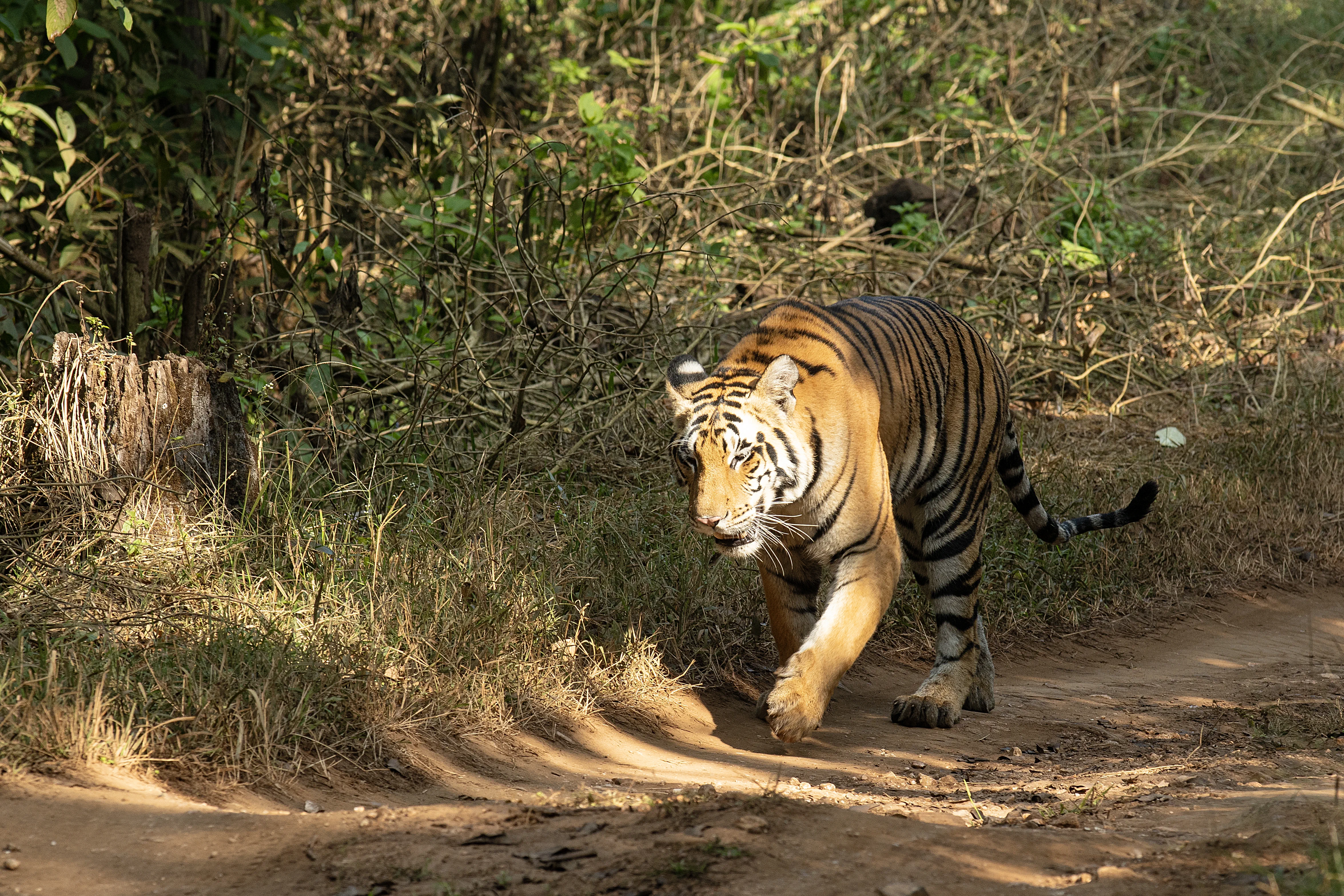
Post-monsoon, Kanha transforms into a vibrant green world. Nullahs are still flowing, grasslands are lush with tall grasses and undergrowth is thick with vegetation. Sighting Tigers in the morning safaris with all this background drama is a blessing.
- New Tigers can be expected in the tourism area of the Park as the season opens after a three month break.
- Birdlife is better as the jungle teems with the presence of residents and arrival of migrant species. Barasingha rutting calls from December are a treat to hear during safaris.
- Active but elusive - Big cats are often elusive due to dense vegetation and ample sources of water in the jungle.
- Tigers are more active during the day this time of the year looking for mates and marking their territory.
- Misty mornings and soft light is a blessing for photographers.
Our naturalists suggest combining safaris with nature walks and wilderness drives around Tilari village, where animal calls and tracks tell quieter stories.
July to October — The Park's Resting Heart
Kanha's core zones remain closed during the monsoon (July–September). The buffer zone is still open to visitors. Morning, afternoon and night safari options are available in the buffer during this time. Tiger sightings take a back seat during this time.
It is one of the most beautiful times to experience Kanha's beauty. Innumerable shades of green, overflowing nullahs and a flowing Banjar river invites you to soak in Kanha in its unfiltered best.
The Best Zones for Tiger Sightings
Kanha is divided into several safari zones. While tigers roam freely across all, some zones consistently reward patient observers.
- Kisli Zone: Closest to Khatiya gate near to which Outpost 12 is located. Offers a variety of landscapes to look for big cats.
- Kanha Zone: Ideal for landscapes and photography. Grasslands are great places for spotting tigers.
- Mukki Zone: Known for frequent sightings of tigers near waterholes.
- Sarhi Zone: Remote and peaceful, great for birders and gives a good sighting chance for big cats in the grasslands.
- Khatiya Zone: Night drives offer good chances to spot Tigers and nocturnal wildlife.
Our naturalists track zone-wise movement patterns weekly and assist guests in choosing the right permits.
Beyond Sightings — The Spirit of the Jungle
Seeing a tiger is unforgettable, but understanding the ecosystem is equally magical.
At Outpost 12, our team encourages guests to appreciate:
- The symphony of calls - deer, langurs, peacocks, raptors and shamas.
- Active herds of Barasingha gracing the meadows.
- The tree variety found in Kanha
- The role of grasslands and rivers in maintaining the tiger's habitat.
- The insect biodiversity and their role in the ecosystem.
- The human stories of Baiga and Gond communities who live in harmony with this land.
- Role of the Forest Dept of MP in active conservation of the Tiger Reserve.
Our Naturalists believe a strong understanding of how the ecosystem works helps in appreciating every creature's contribution in sustaining it. May it be a Tiger, spider, orchid or a grass.
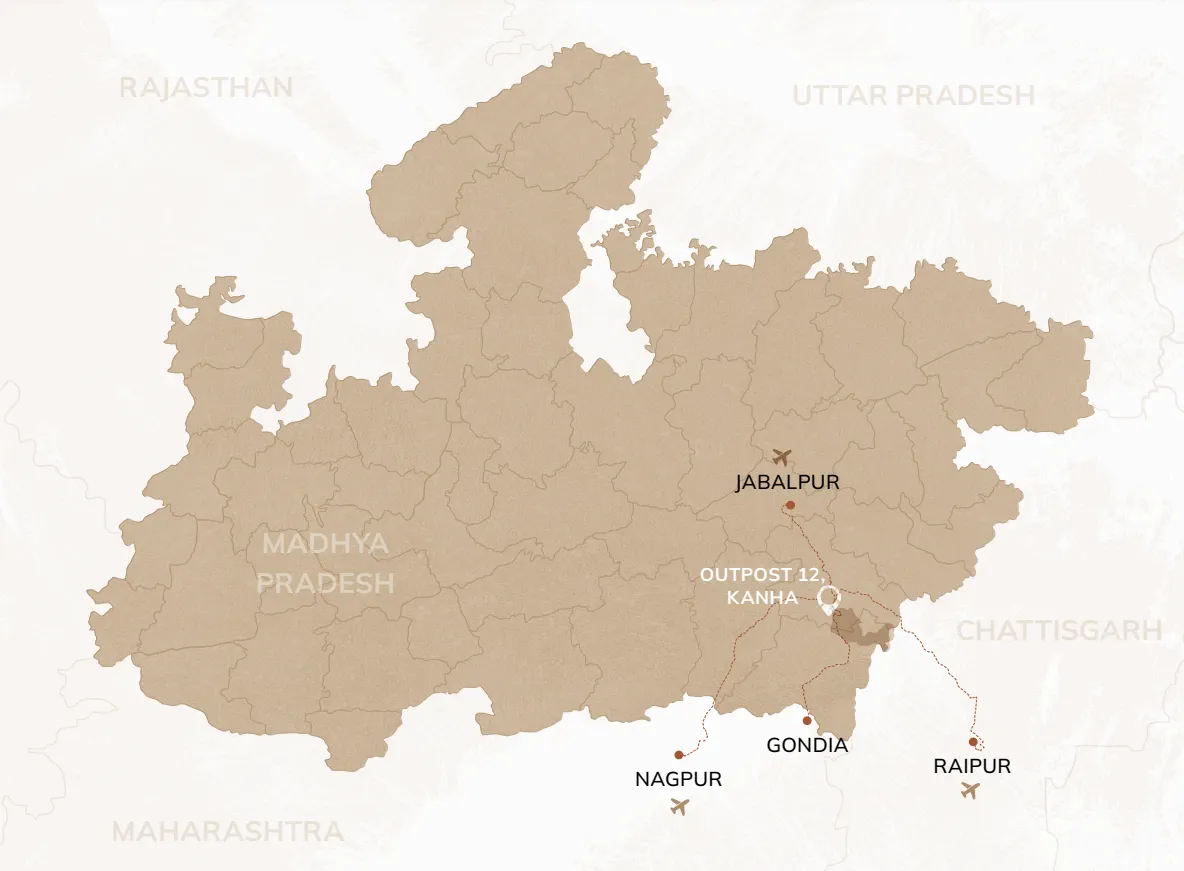
Your Travel Guide to from Jabalpur, Raipur & Nagpur
The Journey Is Part of the Experience
Reaching Outpost 12, Kanha is not just road travel - it's a transition into tranquility. As you leave the city behind, the air grows fresher, the forests denser, and every mile feels like a gentle descent into nature. Nestled by the Banjar River near Tilari Village, Outpost 12, Kanha sits at the threshold of Kanha National Park's lush Sal jungles.
Here's your complete guide to reaching us from Jabalpur, Raipur or Nagpur; along with insider tips to make the journey as beautiful as the destination.
By Air - The closest airports to Kanha National Park
| Airport | Distance to Lodge | Travel Time | Route Highlights |
|---|---|---|---|
| Jabalpur (JLR) | ~140 km | ~3 hrs | Narmada river, countryside roads via Mandla |
| Raipur (RPR) | ~250 km | ~5 hrs | Tribal villages, open meadows, forest roads |
| Nagpur (NAG) | ~260 km | ~5 hrs | Kanha-Pench-Tadoba corridor, smooth highway via Seoni |
By Train - Scenic Routes Across Central India
The nearest major railway stations are:
- Jabalpur (JBP) - 140 km
- Gondia (G) - 140 km
- Raipur (R )- 250 km
From each station/airport, private cabs can be arranged directly to Outpost 12. Our team is happy to pre-book transfers to ensure a smooth arrival.
By Road - Scenic self drives to the Wild
From Jabalpur to Outpost 12
Route: Jabalpur → Mandla → Chargaon→ Tilari Village
- Distance: ~140 km
- Time: 3 hours
- Road condition: Wide highway till Mandla, after that forest roads from there are well maintained.
From Raipur to Outpost 12
Route: Raipur → Gandai→ Baihar → Rata→Mocha → Tilari
- Distance: ~250 km
- Time: 5 hours
- Road condition: Excellent till Outpost 12
From Nagpur to Outpost 12
Route: Nagpur → Seoni → Nainpur → Mocha → Tilari
- Distance: ~260 km
- Time: 5 hours
- Road condition: Smooth four-lane highway till Seoni; forest roads ahead are peaceful and picturesque.
Guest favorite: The Jabalpur-Mandla-Kanha drive offers gorgeous early morning forest stretches and local tea stops along the Banjar Valley. It is also the closest approach to Outpost 12, Kanha.
Pro Tip: Our team can share Google Maps navigation pins and preferred stopovers for meals and fuel on request.
Private Transfers & Assistance
Outpost 12 provides assisted transfers from all major arrival points:
- Private SUVs with vetted local drivers
- Air-conditioned comfort with luggage space
- Refreshments
To book a transfer, simply email us or mention it while reserving your stay.
Travel Tips from Our Team
- Best time to travel: Daytime between 6 AM - 4 PM for the most scenic light.
- ATMs: Available in Mandla and near Khatiya gate. Local POS ATMs are also available.
- Fuel: Top-up at Mandla or Baihar - last reliable stations before forest zone.
- Network: Airtel and Jio both have coverage along the way. However, Jio has the best coverage at Outpost 12.
- Responsible driving: Avoid honking inside forest limits, keep headlights on low-beam after dusk, don't drive under the influence of alcohol and stay within speed limits.

Essentials from our naturalists at Outpost 12
Wilderness rewards those who come prepared.
There's something deeply exciting about packing for the jungle, each item in your bag becomes part of your story in the wild. At Outpost 12, our naturalists see it all; first-time travelers who forget a hat, seasoned explorers who carry more camera gear than clothes and the occasional guest who discovers the magic of traveling light.
Here's our definitive guide to what to pack for your Kanha safari, so you're ready for every rustle, roar and ray of sunshine.
Dress for the Jungle, not the city
Choose earthy tones
Opt for neutral colors like olive, khaki, brown, beige. Bright hues (red, white, blue) can distract animals and stand out in photos.
Layer for comfort
Kanha's weather shifts quickly,
- November to February: Cold mornings (2 - 12°C) - bring a fleece or windcheater along with warm jackets for layering. Woolen caps and scarves are also needed.
- March to May: Hot days (30 - 45°C) - light, breathable cottons are ideal. Sun hat or a UV resistant cap
- Monsoon (closed season for core): Rain jacket and moisture-wicking fabrics help.
Pro Tip from our naturalist team: "Always wear full sleeves, they protect you from sun, bugs and bushes."
Safari essentials you shouldn't miss
Hat, Sunglasses & Scarf
A wide-brimmed hat and UV-protected glasses are essential for open gypsy rides. A light scarf or buff doubles as sun or dust protection.Binoculars & Camera Gear
You don't need a pro-setup to enjoy sightings! Even a simple pair of 8x42 binoculars opens up an entirely new world; from raptors in flight to a shy leopard in shade. If you bring a camera, remember extra batteries and memory cards; extra charging points at Outpost 12 are available in every cottage.Eco-friendly Insect Repellent & Sunscreen
Avoid DEET-heavy sprays (they can harm the ecosystem). Choose natural, forest-safe repellents. Outpost 12 provides refillable, eco-safe options for insect repellent and sunscreen in each cottage for guests.Reusable Water Bottle
Plastic is banned inside the park. Bring a sturdy, reusable bottle or use our stainless steel bottles provided in the jeeps, refilled daily with filtered water.Torch or Headlamp
Essential for night walks between cottages and after-dark dinners by the river deck. Our pathways are well-lit, and a torch is provided in every cottage; it's part of the adventure!
Pack Smart for Comfort & Sustainability
- Minimal plastic: Avoid disposable packaging and plastic bags.
- Reusable tote: Handy for carrying gear on safaris.
- Medicines: Bring your regular prescriptions; the nearest pharmacy (they have basic medicines) is 20 minutes away.
- Power bank: Great for charging phones/cameras during long safari days.
Our eco-guideline: "Leave nothing behind but footprints - and take nothing but stories."
Optional Add-ons for the enthusiasts
- Field guidebook (birds, mammals or trees of Central India).
- Notebook or wildlife journal, many of our guests love sketching or writing after safaris.
- Travel pillow for road transfers.
- Small snacks (dry fruits, granola bars) - as per park rules, ensure nothing is littered.
Your Stay at Outpost 12 - Designed for Ease
At Outpost 12, we simplify the wild:
- Our safari jeeps carry warm blankets, ponchos, first aid kits, hot water bottles, light snacks, drinking water, sunscreen and insect repellent
- Your naturalist helps prep gear before each drive.
Before You Zip That Bag...
Remember, the best safaris aren't about what you carry, but what you observe.
Listen to the wind, the alarm calls, the stories whispered by your guide.
And when you return, you'll realize your most valuable souvenir is the stillness you found in Kanha.

